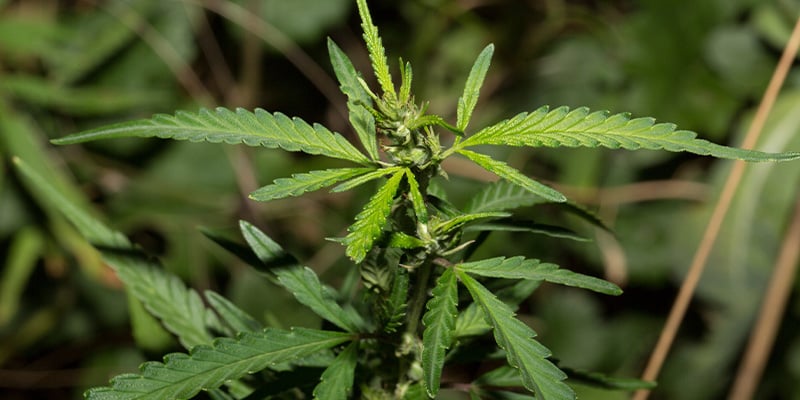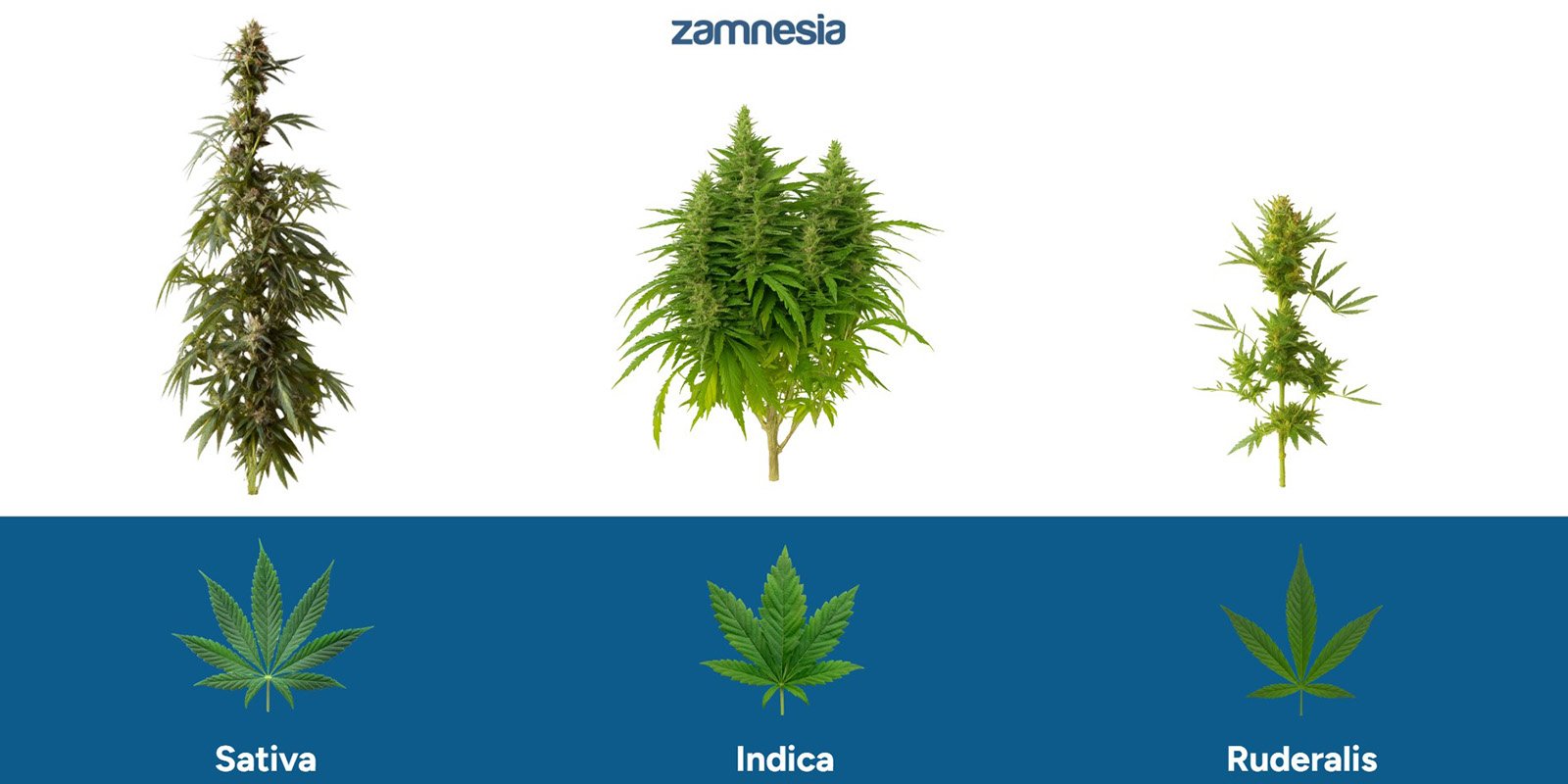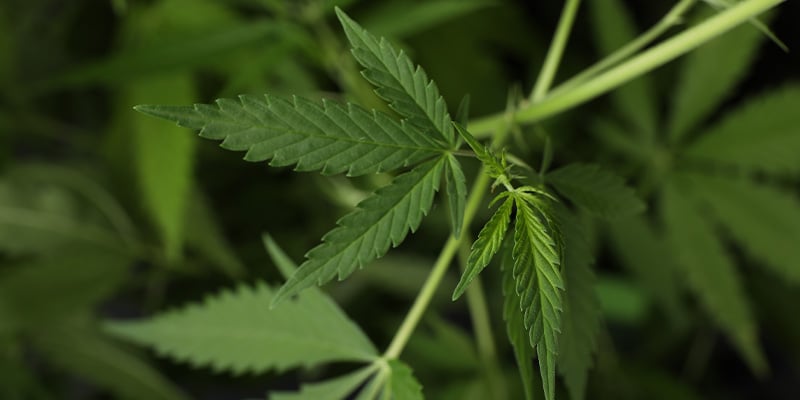What is cannabis ruderalis?
.jpg-HEADER.jpg)
Cannabis ruderalis is a hardy wild variety that transformed modern breeding. Known for its autoflowering genetics, the ruderalis plant grows small, flowers quickly, and carries unique traits that make it invaluable for creating resilient, fast-growing strains.
Rugged, fast, and genetically unique, cannabis ruderalis isn't grown to be smoked, but it might be behind your favourite autoflowering strain. So, what is ruderalis? Put simply, it’s a hardy wild subspecies of cannabis that thrives in harsh climates and flowers according to time rather than light cycles.
When it comes to ruderalis effects, users typically report little to no intoxicating high, though some may experience mild relaxation due to its naturally higher CBD levels. While its low potency means you won't find people rolling up joints full of 100% ruderalis flower, its genetics are invaluable in modern breeding. In this guide, we'll explore the origins, growth characteristics, and unique role of ruderalis in shaping today's autoflowering cannabis.
The origin of cannabis ruderalis
.jpg)
The cannabis ruderalis plant traces its roots to the rugged landscapes of Russia and Central Asia, where it adapted to short summers and harsh climates. It wasn't until the early 20th century that botanists began to recognise it as distinct from the better-known indica and sativa varieties.
In 1942, Russian botanist D.E. Janischewski described a population of wild cannabis growing near the Volga River in Siberia. These plants were noticeably different: much smaller, with uniquely shaped leaves, and a rapid, time-based flowering cycle. Because of these traits, Janischewski classified them as a separate species, coining the name “cannabis ruderalis” from the Latin rudus, meaning rubble, aptly reflecting its ability to thrive in poor, disturbed soils.
Today, ruderalis is regarded as a wild, resilient branch of the cannabis family. Though it lacks the high THC content of cultivated strains, its hardy nature and unusual flowering traits have made it invaluable for modern breeding.
Growth characteristics of ruderalis

The ruderalis plant is a compact, hardy variety that looks very different from its indica and sativa relatives. Typically reaching only 30–70 cm in height, it develops a sturdy central stem with few side branches, giving it a more “wild weed” appearance. Its leaves are distinctive too: instead of the broad indica or slender sativa shapes, ruderalis leaves often display just three conical “fingers”.
Another defining feature of the ruderalis plant is its unique flowering cycle. Unlike photoperiod cannabis, which depends on changes in light exposure, ruderalis begins flowering according to age, usually within 3–4 weeks of germination. This autoflowering trait evolved as a survival mechanism in regions with short summers, ensuring the plant could reproduce before the season ended.
In terms of chemistry, pure cannabis ruderalis contains very little THC, meaning the psychoactive effects are minimal. However, it often has relatively higher CBD content, making it more interesting for potential medical users. Its buds are small and less dense, sometimes called “popcorn buds”, and yield far less than cultivated indica or sativa varieties.
Despite these limitations, ruderalis plants possess valuable strengths:
- Naturally resistant to pests and disease
- Tolerant of temperature fluctuations and poor soils
- Fast life cycle, allowing multiple harvests per year in the right conditions
For these reasons, the ruderalis plant is not grown for smoking in its pure form, but its robust genetics make it an essential building block for modern autoflowering cannabis.
How ruderalis differs from other cannabis types

While indica and sativa dominate most discussions around cannabis, ruderalis stands apart as the rugged, self-sufficient member of the family. Its small stature, unique flowering cycle, and chemical profile set it apart not just visually, but also in terms of use.
| Trait | Ruderalis | Indica | Sativa |
| Height | 30–70 cm | 60–180 cm | 150–300 cm |
| Flowering Trigger | Time-based | Light cycle | Light cycle |
| Leaves | 3 narrow conical fingers | Broad, wide | Long, narrow |
| Bud Size | Small “popcorn” | Dense, resinous | Large, airy |
| THC Content | Very low | High | High |
| CBD Content | High | Moderate | Low to moderate |
| Uses | Breeding, genetics | Recreational | Recreational |
The main distinction is the autoflowering ability of the ruderalis plant, a genetic trait not found in indica or sativa. While the latter requires carefully timed light cycles to initiate flowering, ruderalis plants begin blooming regardless of light cycles.
Physically, ruderalis remains much smaller, making it less suited to large-scale cultivation for smoking. Chemically, it lacks the potency of indica and sativa, but its higher CBD levels and hardy nature have secured its place as a genetic cornerstone in developing resilient ruderalis strains and modern autoflowering hybrids.
Why ruderalis is not grown to smoke
Because ruderalis produces very little THC, it's not favoured among those seeking a true psychoactive experience, as it lacks the intensity most consumers expect. In addition to its low potency, the plant's compact structure and small buds mean that yields are modest at best. The flowers are light and airy, which makes them far less desirable for those seeking rich flavours, aromas or dense resin.
However, some users choose to smoke ruderalis buds, though most growers value the plant primarily for its breeding potential.
Ruderalis in autoflowering breeding

While ruderalis is not usually cultivated for smoking, its genetics are the foundation of every modern autoflowering strain. Breeders recognised early on that the unique, time-based flowering cycle of ruderalis plants could transform cultivation, making it possible to grow cannabis without relying on the traditional light changes or controlled indoor schedules.
By crossing ruderalis genetics with indica or sativa, breeders can stabilise the autoflowering trait while combining it with higher THC content, richer flavours, and more abundant yields. The result is the vast variety of autoflowering hybrids available today: plants that retain the hardiness of ruderalis but deliver the potency and complexity consumers expect.
The benefits of using ruderalis genetics in breeding are significant:
- Short growth cycles: Autoflowers can be harvested in as little as 8–10 weeks.
- Stealth and discretion: Smaller plants make for low-profile grows, ideal for hobbyists, or limited spaces.
- Resilience: Inherited durability helps autoflowers thrive in harsher conditions and resist pests, diseases, and environmental fluctuations.
Thanks to these traits, the role of cannabis ruderalis has shifted from a wild weed to an indispensable genetic tool. Without it, the autoflower revolution, bringing flexibility and accessibility to growers worldwide, wouldn't exist.
Is ruderalis still relevant today?

As the genetic backbone of autoflowering hybrids, the ruderalis plant continues to shape how growers and breeders approach cannabis cultivation. Without its unique autoflowering ability, the fast, discreet and resilient strains enjoyed by so many today would not exist.
Ruderalis genetics are expected to play a key part in future breeding projects, from developing more resilient crops to enhancing CBD-rich strains. This hardy wild cannabis will keep offering possibilities that extend well beyond indica and sativa lines.
For enthusiasts and small-scale growers, understanding ruderalis means appreciating its quiet yet crucial role in cannabis history. While you may never smoke a pure ruderalis flower, chances are its genetics have already greatly influenced the strains you know and love.
If you'd like to dive deeper into the world of cannabis strains, explore our seed collection, or visit our Grow Hub for more resources.





 United States
United States











